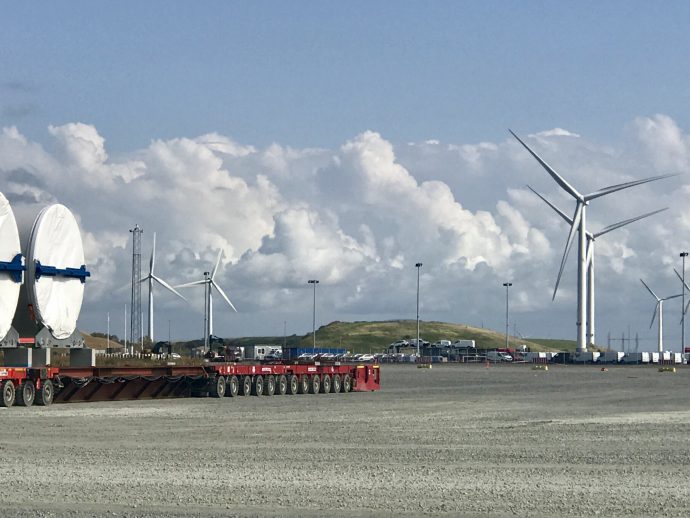The global shift away from fossil fuels is both simple and complex. Countries around the world are establishing a common goal of reducing carbon emissions and replacing fossil fuels with alternative energy, even as fossil fuel demand looks set to peak this decade and remain high after.
Interest in sustainable energy is reflected by ongoing investment in renewable infrastructure including offshore wind farms worldwide. Offshore wind not only produces energy at a cost that competes with existing fossil fuel technology, but also offers countries potential energy sovereignty.
GAC’s existing shipping, logistics and offshore capabilities provide support for that transition.
"We are witnessing the acceleration of energy transition as countries seek to boost their energy security and become less reliant on oil and gas – imported or otherwise," says Erland Ebbersten, Group Vice President of Marine & Energy at GAC.
Western and Northern Europe are already dedicated to the green shift. The years 2035, 2040 and 2050 are all common milestones for governments across Europe to reach net-zero carbon output.

Offshore expertise
GAC has been involved in offshore development projects including oil & gas activities for several decades, and that experience and expertise are now being adapted to offshore renewables projects which require similar support.
An offshore project typically requires a host of services and assets, from agency, husbandry, bunkering to vessels through to multi-modal freight, warehousing, anchor handling and more. And as a single source provider of integrated solutions, GAC is able to provide customised services to meet clients’ needs.
This puts GAC in a good position to both support and propel the global sustainability drive worldwide as the number of countries working to take advantage of offshore wind opportunities continues to grow.
Connecting opportunity with expertise
"As one of the world's largest providers of integrated shipping, logistics and marine services, GAC has ongoing projects globally from Europe, North Sea to Americas and Asia,” shares Erland.
GAC has been supporting Europe’s sustainability aims with its bedrock of agency and logistics services for years. In the UK, GAC has serviced vessels involved in geophysical surveys and the installation of wind turbines, substations, jackets and suction anchors.
The expertise gained there is being transferred and applied to other offshore wind projects in the North Sea and Northern Europe, as well as other parts of the world.

“Our geographical reach is what makes us different,” adds Erland. “We are present in all major global hubs and for locations that require additional manpower or support, we bring in experts who can execute. Essentially, this means that we can potentially support developments anywhere in the world.”
With its long foothold in Asia, GAC is increasingly looking for opportunities to use its experience for rapid, sustainable development. In November, GAC opened an office in Taichung, Taiwan, which seeks to become a leading provider of offshore wind power in the region. Having a local presence provides an advantage in supporting the development of renewable power sources.
By using its strong presence and infrastructure in Houston, GAC has also entered emerging markets in the Americas like Trinidad and Tobago, Guyana, Suriname and Brazil, and is hopeful of securing more renewables projects in the Gulf of Mexico.
There is also potential for GAC to convert its existing fleet to support new developments and the requirements of floating wind farm installation projects.
Innovation
The trajectory towards achieving a greater proportion of sustainable energy output worldwide is a positive one and is shared by effectively every international authority. However, recognising the reality of a transitional period is essential, especially for the developing world.
To retain production – which will not increase in the same way as it did in the past – substantial investments to replenish what we are taking out of the ground will be required.
Japan is already gearing up hydrogen power generation and making hydrogen its major energy source. In Australia, significant investments are being pumped into gas-generated carbon known as blue hydrogen.
Pathways to net zero are becoming more complex as both urgency and technological capability increase, so it is crucial that the expertise, experience and infrastructure available across industry is utilised and shared. GAC is in a strong position equipped with such assets, and is actively engaged in supporting industry’s efforts to meet current and future energy demands.